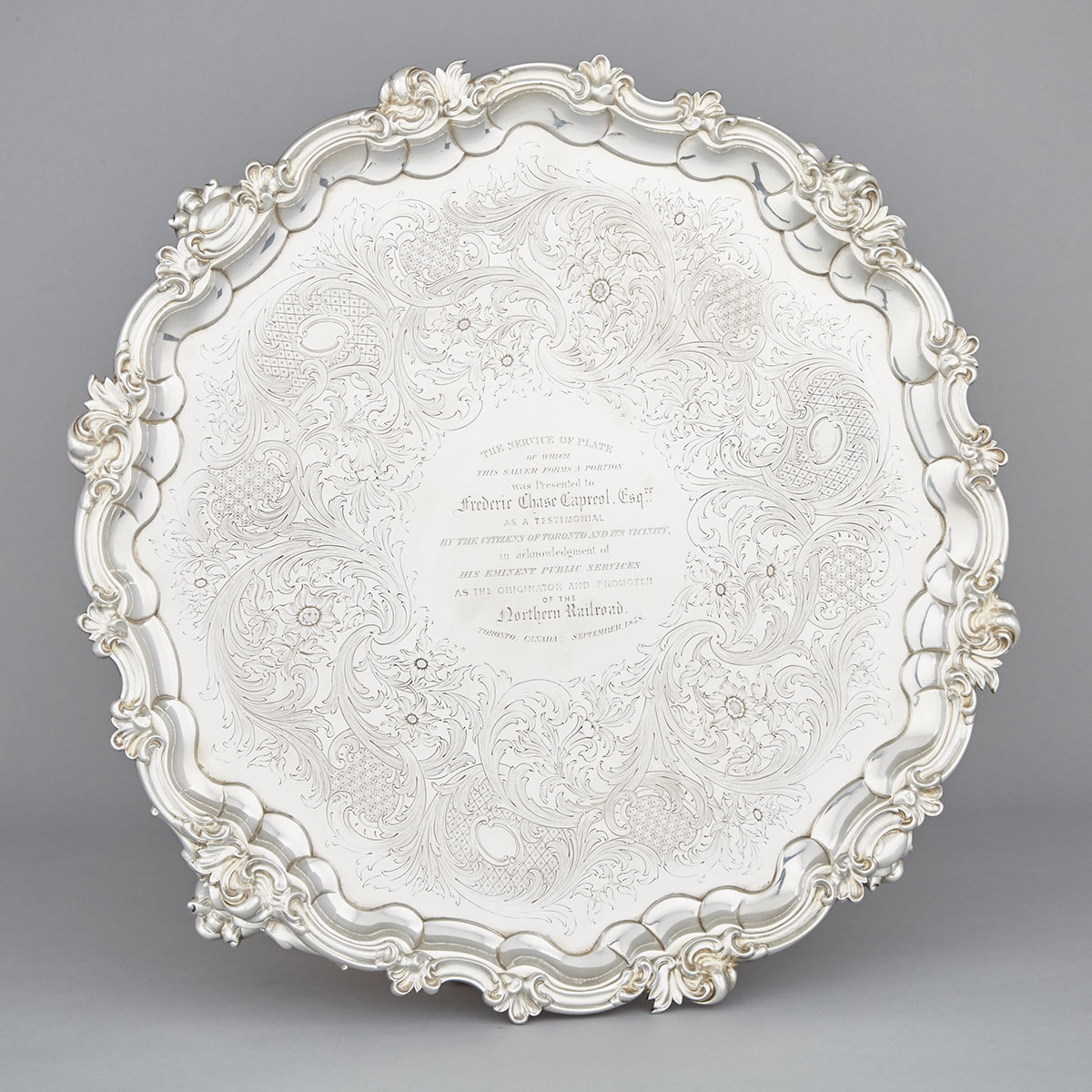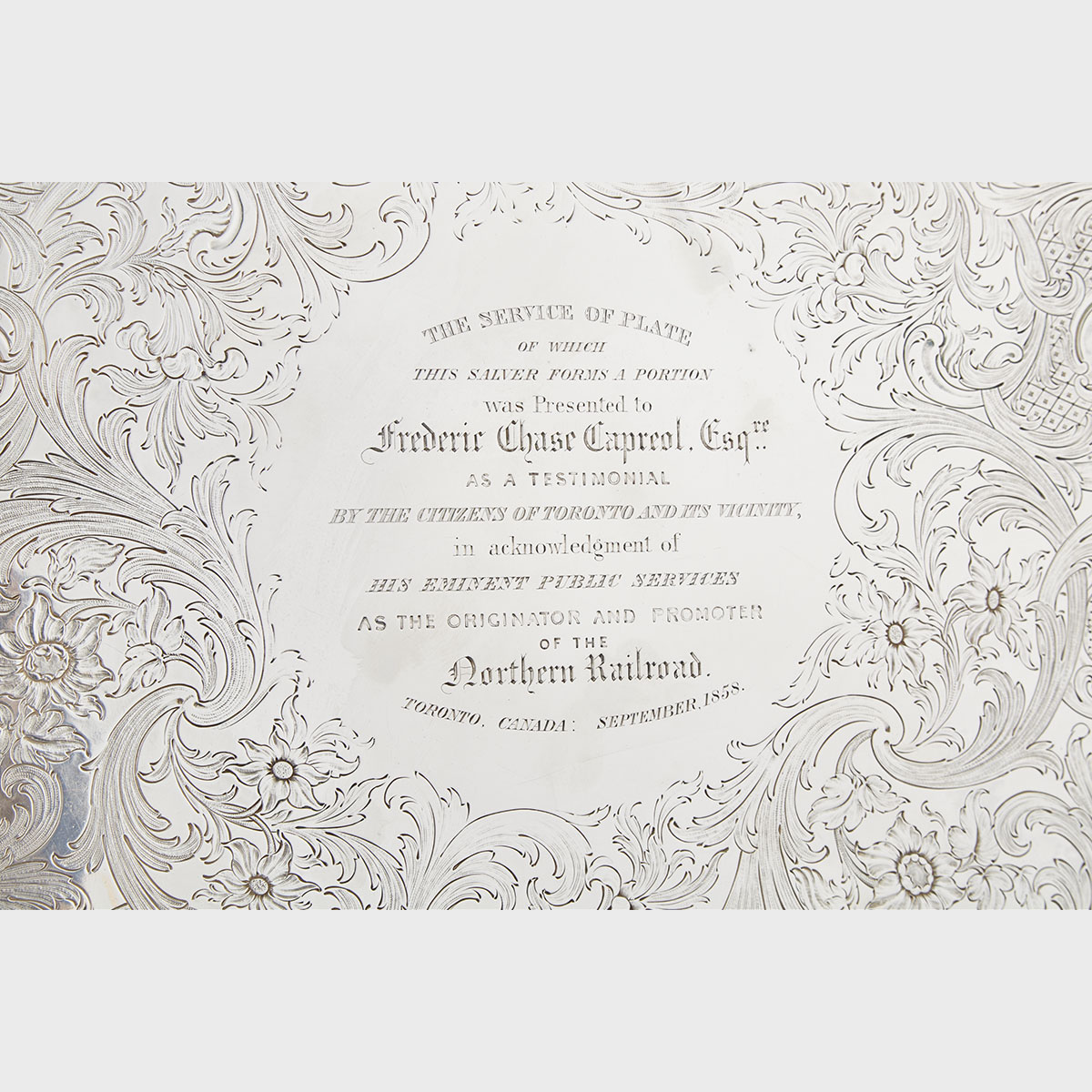Lot 594
Victorian Silver Large Circular Salver, Charles Reilly & George Storer, London, 1845

Lot 594 Details
Victorian Silver Large Circular Salver, Charles Reilly & George Storer, London, 1845
with shaped and moulded foliate scroll rim raised on four panel feet, chased and engraved with a broad band of scrolling and flowering foliage enclosing diaper panels, the centre with a presentation inscription
diameter 22" — 56 cm.
107 oz. — 3329 grams
Estimate $3,000-$5,000
Additional Images

Note:
Inscription reads: THE SERVICE OF PLATE / OF WHICH / THIS SALVER FORMS A PORTION / was Presented to / Frederick Chase Capreol, Esqre.. / AS A TESTIMONIAL / BY THE CITY OF TORONTO AND ITS VICINITY, / in acknowledgment of / HIS EMINENT PUBLIC SERVICES / AS ORIGINATOR AND PROMOTER / OF THE / Northern Railroad. / TORONTO, CANADA: SEPTEMBER, 1858
In the 1840s there was no individual so clear in their vision for a more highly developed Canada than Frederick Chase Capreol, who campaigned tirelessly for the construction of the Northern Railway of Canada. A businessman by trade, Capreol proposed methods for railway funding that were creative, unorthodox, and ultimately met with public outrage. In writing a letter to the mayor of Toronto on January 2, 1850, he asked for support in his suggestion to use a lottery to raise the money needed to build the northern line. In his enthusiasm, Capreol envisioned that the railway would allow for cities to crop up deep into the Canadian wilderness, "... where the hum of busy life may in time take the place of the stillness of the forest.” While the lottery idea was dismissed as an immoral means of securing funds, Capreol continued to encourage public fundraising by adamantly describing the economic opportunity that would otherwise be forgone by the nation.
The successful completion of the Northern Railway, which was then called the Ontario, Simcoe & Huron Railroad for the three lakes it connected, played a crucial role in establishing Toronto as an urban city center. This line featured Canada’s first locomotive, the Toronto No. 2, built by James Good of Toronto in 1853. In addition to the dramatic industrializing effect of the railway, it was also influential in shaping the aesthetic and physical characteristics of Canadian cities, comprising a central component of the urban landscape.
The township of Capreol in Northern Ontario was named in honour of the man who foresaw the prosperity that the railways would bring to Canada.
CONDITION DETAILS
Engraved on the reverse ‘The Service consists of / 1 Large Waiter, / 2 Smaller do. / 1 Epergne, / 4 Table Candks. / 4 Bottle Stands, / 1 Sugar Vase & Cover, / 1 Cake Basket, / 2 Claret Jugs.’; in good condition; area of the inscription on the reverse has either been ‘let in’ or at some time protected from wear or tarnish by lacquer; well marked on the underside of the cavetto


